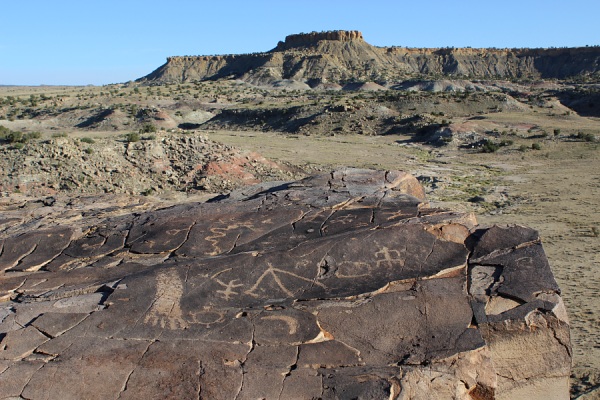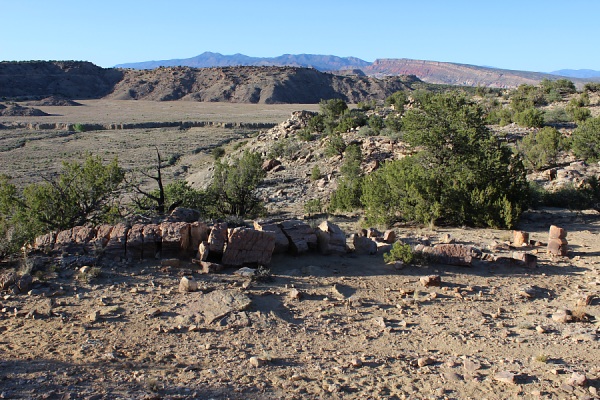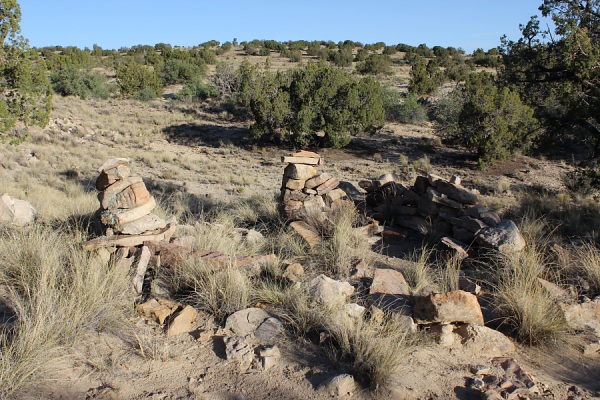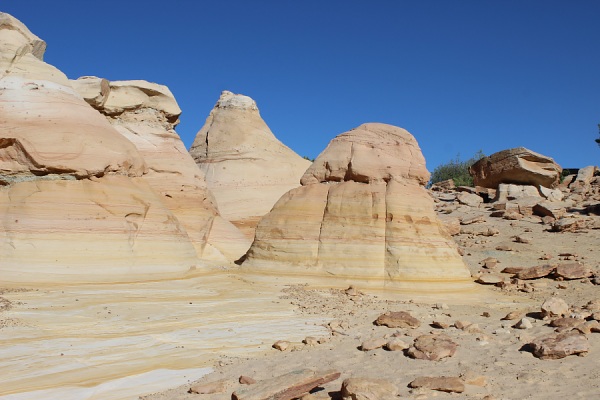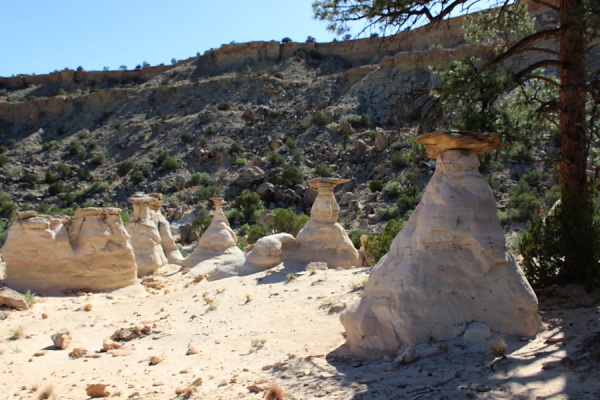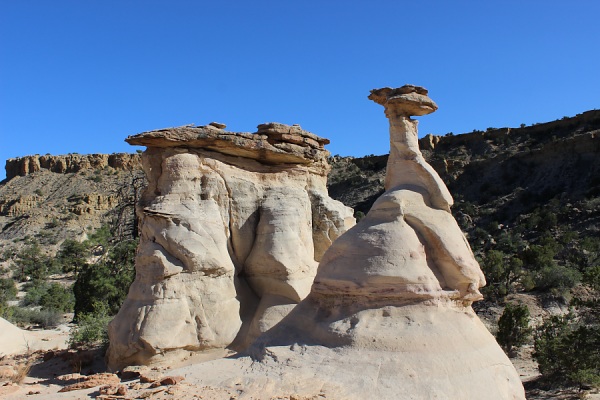Ojito Wilderness
Managed by the New Mexico Bureau of Land Management, Ojito Wilderness consists of 11,000 acres of high desert landscape with wide open spaces, steep-sided mesas, remote box canyons, meandering arroyos, and badlands.
Visitors can enjoy wildlife viewing and bird watching, as well as horseback riding, sightseeing, and photography. Rock layers in the canyon walls and cliffs enhance all of these activities. Backpacking and primitive camping are allowed, and do not require a permit.
For those who enjoy mountain bike riding, to the east of the Ojito Wilderness is the famous White Ridge Bike Trails which is ranked #1 in the State of New Mexico and #11 in the BLM's Top 20.
Hunting, managed by the New Mexico State Department of Game and Fish, is allowed within the Ojito Wilderness. Ojito is located within New Mexico Big Game Management Unit 9. On the way to Ojito Wilderness, there is BLM and Zia Recreational Trust Lands which allow for established shooting ranges.
➠ Google Map & Directons
➠ Learn about the "Seismosaurus: The Earth Shaker" by David Gillette
⇩ Ojito Wilderness Brochure (PDF 612 KB)
⇩ Ojito Wilderness Information and Maps (PDF 866 KB)
⇩ GPX File (Right-click 56 KB)
⇩ White Ridge Mountain Bike Trails Brochure (PDF 1.1 MB)
➠ BLM Web Site
Activities
The steep canyons and rugged cliffs of Ojito can provide rewarding challenges to experienced hikers, but even novices can enjoy this spectacular area by venturing just a short distance from the road on a couple of designated trails: Hoodoo Trail and Seimosaurus Trail.Visitors can enjoy wildlife viewing and bird watching, as well as horseback riding, sightseeing, and photography. Rock layers in the canyon walls and cliffs enhance all of these activities. Backpacking and primitive camping are allowed, and do not require a permit.
For those who enjoy mountain bike riding, to the east of the Ojito Wilderness is the famous White Ridge Bike Trails which is ranked #1 in the State of New Mexico and #11 in the BLM's Top 20.
Hunting, managed by the New Mexico State Department of Game and Fish, is allowed within the Ojito Wilderness. Ojito is located within New Mexico Big Game Management Unit 9. On the way to Ojito Wilderness, there is BLM and Zia Recreational Trust Lands which allow for established shooting ranges.
Geology and Paleontology
Once part of a vast river channel and floodplain complex that was eventually inundated by inland seas, the Ojito Wilderness boasts world-renowned fossils-dinosaurs, trees, plants, and marine invertebrates. Erosion has over time exposed the bones of huge dinosaurs, large segments of petrified trees, as well as leaves and seashells. One of the largest dinosaurs ever discovered, the Seismosaurus, was excavated here in 1985 and now on display at the New Mexico Museum of Natural History in Albuquerque. Because these fossils provide significant information about ancient life, it is important that they are left undisturbed until they can be collected by professional paleontologists. Collecting fossils in this wilderness is prohibited by law.Prehistory and History
Several human cultures have tried to carve a living from Ojito's sparse resources, including the Ancestral Puebloan, Navajo, and Hispanic cultures. The word "Ojito" is Spanish for "Little Spring." The prehistoric and historic ruins and artifacts left by these inhabitants are the clues that archaeologists use to tell the story of existence here. The Archaeological Resources Protection Act and other laws protect both ruins and artifacts. Please leave them undisturbed for others to enjoy, and for future archeologists to study.Directions and Information
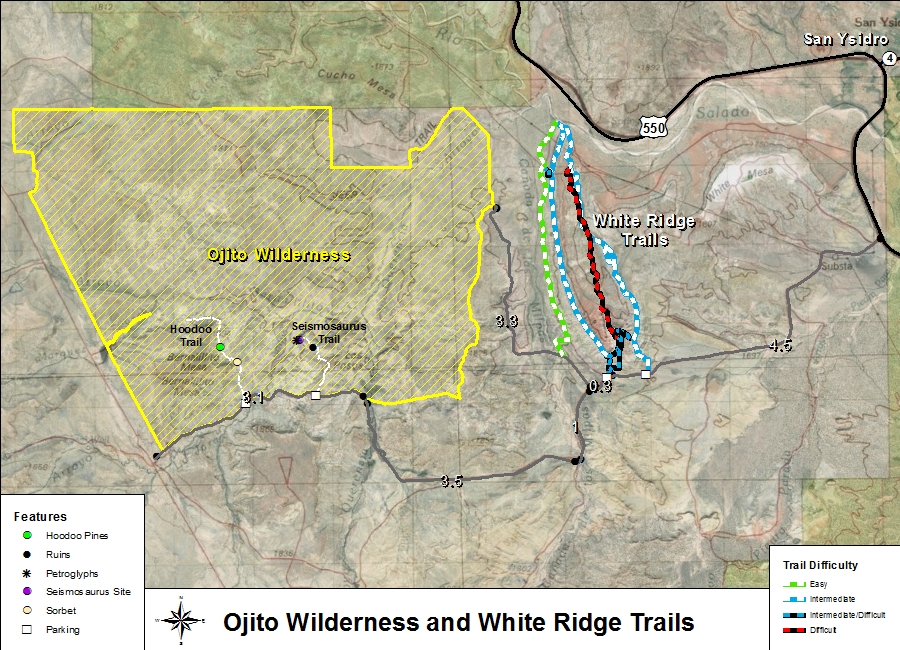
Report Vandalism
Bureau of Land Management
Rio Puerco Field Office
100 Sun Avenue, NE
Albuquerque, NM 87109
(505) 761-8700








